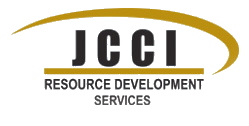Why Title III SIP is Unique
Among all the U.S. Department of Education’s grant opportunities, the Title III Strengthening Institutions Program (SIP) is most unique. The JCCI Resource Development Services team monitored the federal budget proposals presented in 2017 and was shocked to learn that the initial budget from the president’s office removed the entire line item for Title III SIP. The Trump administration stated that funding was removed from the budget because they felt Title III SIP duplicates other grant funding opportunities. Every educational institution that has ever received an SIP grant award understands how this program is different from most other DOE grants. Fortunately, Congress’s final budget returned that line item funding to cover grantees at least during the 2018 year. With much debate about government spending and the national debt and an uncertain future for Title III SIP, it seems appropriate to consider what makes SIP different and why continuing this type of funding will, indeed, strengthen our higher educational institutions.
Problem Solving
Though there are many federal grants that target under-resourced institutions serving low-income students, only Title III SIP compels an institution to examine a significant problem that is unique to their operations and their student body. Successful applicants will not only identify this problem, but will also propose a research- and evidence-based solution to that problem. Project evaluations must demonstrate successful problem solving and achievement of outcomes within the 5-year grant time frame. The grantee is responsible for showing that the problem has been resolved with no future need for additional DOE funding. This grant enables institutions to solve problems that impact the long-term future of the organization and the students they serve and requires grantees to resolve the issues “on time and within budget.” In fact, awardees cannot re-apply for the same problem, and they must wait a minimum of two years before applying for a Title III SIP grant to assist in resolving a different issue. If a grantee applies in another grant cycle, the institution receives no benefits for being a prior SIP recipient.
By Comparison
For those who are unfamiliar with the way other federal grant programs work, the problem-solving and time-frame benchmarks for Title III SIP grants may not seem that unique; however, by comparison to other DOE grants, the unique nature of SIP becomes clear. Consider SIP in comparison to DOE TRIO grant programs. Like Title III, there are several specific grants under the TRIO umbrella. For example, Talent Search and Upward Bound are under the TRIO umbrella of grant funds. Like Title III, TRIO grants are intended to help higher educational institutions provide educational services to students from disadvantaged backgrounds who may have to overcome challenges to completing a degree program. Challenges might include low income, disabilities, or being a first-generation college student. TRIO grants provide important funding to address a variety of socio-economic challenges to student success and higher education.
Unlike Title III SIP grants, though, TRIO grantees can literally receive continual funding for decades without a waiting period between grant applications, and, for most programs, previous grantees are awarded an additional 15 points for prior experience in the competitive grant cycle. The additional points which previous grantees receive make it even more challenging for new and innovative programs to obtain enough points to be funded.
The TRIO programs’ goal of helping institutions serve segments of the population that may need additional support to accomplish educational goals is, of course, a worthy goal. Title III SIP grant competition is fierce, but equitable, as no organization automatically receives points for prior award status. SIP awardees are held accountable for resolving identified issues with a specified time frame in a manner that is sustainable without continual federal funding. No other DOE grant program is designed specifically to support under-resourced institutions (defined by the institution’s educational and general expenditures compared to a national mean for its sector) serving low-income students while ensuring institutional efficiency and sustainability within a 5-year period. Title III SIP remains a unique and transformational investment in our educational system.

